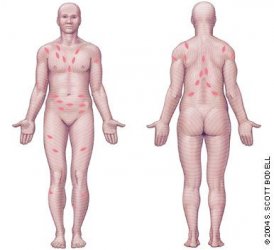Tgace
Grandmaster
Everything youd want to know about knife wounds:
Langers Lines:
So if Im reading this right, cuts perpendicular to these lines will be wider than ones parallel to them correct?
Langers Lines:
If a stabbing with a knife is "straight in and out" then the length of the stab wound on the skin surface is typically slightly less than the width of the blade, due to the elastic recoil of the skin following withdrawal of the weapon. This effect is exaggerated by the tendency of the wound to gape open so that the wound becomes wider but shorter; the extent of gaping reflects the alignment of the wound relative to natural lines of tension within the skin - Langer's lines. Wounds with their long axis parallel with Langer's lines tend to gape only slightly, whereas wounds aligned at right angles to Langer's lines tend to gape widely. The extent of wound gaping is also influenced by damage to underlying fascia and muscles. Consequently, the length of a stab wound on the skin surface should be measured after the gaping edges have been approximated (using transparent tape), thus re-establishing the anatomical relationship of the skin edges that existed prior to injury.
So if Im reading this right, cuts perpendicular to these lines will be wider than ones parallel to them correct?

